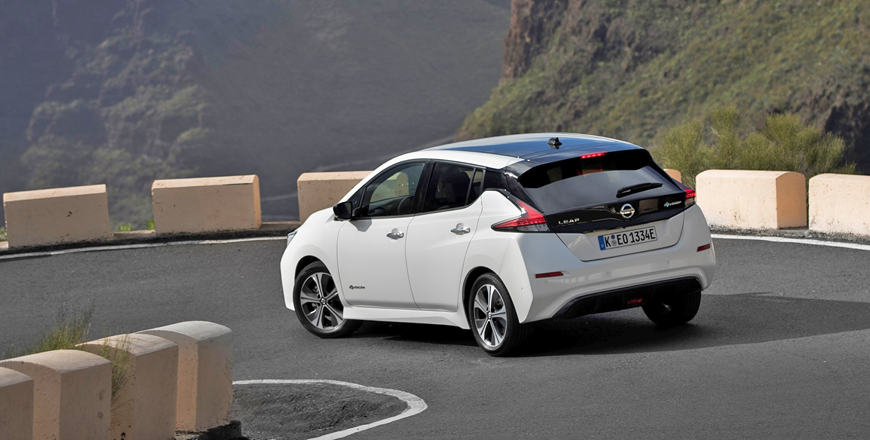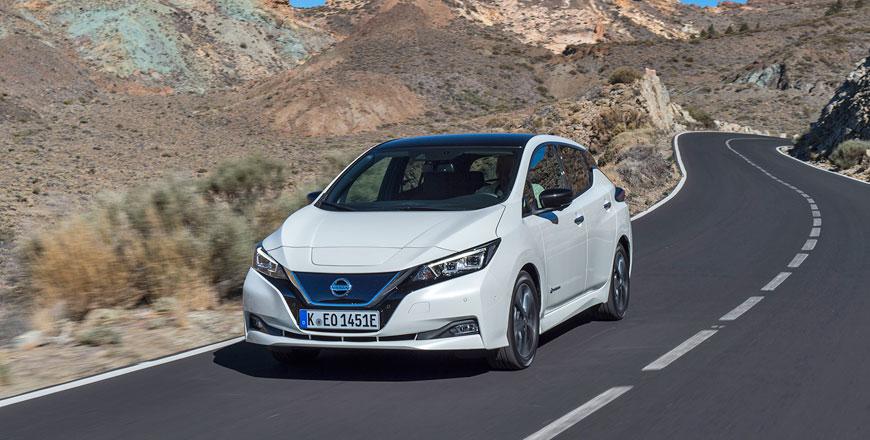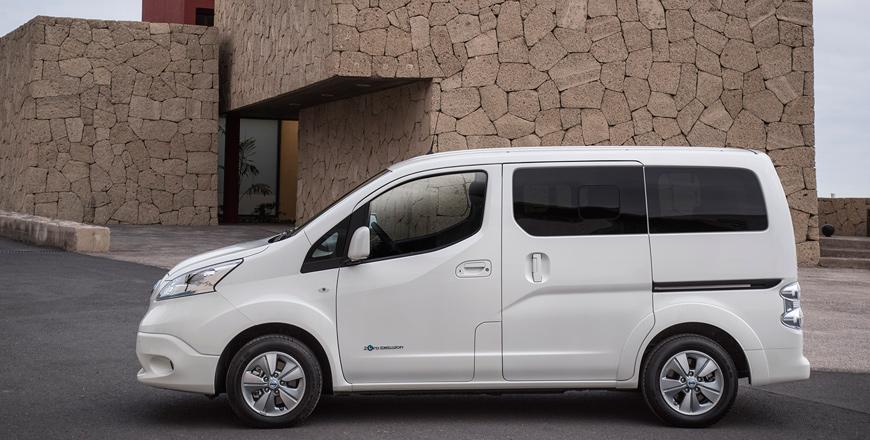You are here
Nissan Leaf: Looking for broader EV appeal
By Ghaith Madadha - Oct 10,2022 - Last updated at Oct 10,2022

Photo courtesy of Nissan
Introduced in 2018, the second generation Nissan Leaf is a more powerful, more economical and more conventionally styled successor to the car that arguably most popularised the EV. If not as fashionable as Tesla’s pricey luxury electric cars, the first generation Leaf’s achievement was in being an attainably down-to-earth and practical daily drive EV. In doing so, it clocked up 283,000 sales during 2010-2018. Meanwhile, the second generation Leaf still holds up well, even as the compact family EV segment expands with new entrants.
Second time style
Becoming the world’s best selling EV, despite its snouty front and bulging headlight style, the first generation Leaf’s quirky design, however, gives way to an unequivocally better looking machine, that is the current generation model. Seemingly looking to broaden the Leaf’s appeal beyond the EV faithful, the handsome second generation Leaf adopts a more conventional, but more aesthetically appealing style. With a sleeker silhouette, more muscular body surfacing, boomerang-like rear lights, tailgate spoiler and rakish hatch angle, the new Leaf has distinctly sportier stance than its predecessor.
Undoubtedly better looking, with its more dramatic heavily browed horizontal headlights and modern V-motion corporate grille design, the second generation Leaf is, meanwhile, powered by an improved version of its predecessor’s electric motor, under its ridged bonnet. Driving the front wheels through a single-speed automatic gearbox, the second generation Leaf also features 40kWh lithium-ion battery pack, rather than 30kWh, and gains 40BHP and 16lb/ft torque. Producing 147BHP at 3283-9795rpm and 236lb/ft throughout a broad and versatile 0-3283rpm band, the Leaf unleashes its full torque with muscular immediacy.
Confident climber
With brief front wheel squeal as pedal slams metal from standstill, the Leaf is reasonably quick through 0-100km/h in 7.9-seconds. Its generous electric motor torque, meanwhile, lends itself to flexible on the move acceleration at low and medium speeds. However, with a single speed automatic transmission, the Leaf’s acceleration rate drops at higher speeds, and limits top speed to just 144km/h. Confident and seamlessly smooth through sustained and sporty hillclimb driving, the Leaf’s claimed 270km combined single charge range, however, noticeably drops under such demanding conditions.
Less efficient at speed or on inclines, the Leaf — like most EVs — is better suited for slower stop and go city driving, in contrast to combustion engine cars. Anecdotally, it proved quite efficient when driven gently on country lanes and highway. Meanwhile, 21-hour domestic electric supply charging time is unequivocally inconvenient, but is more manageably reduced to 7.5-hours using a dedicated wall charger. Non-domestic high capacity top-up charging meanwhile takes 40-60 minutes from warning light to 80 per cent, where available. Far better, this, however, cannot compete with conveniently quick petrol fill-ups.
Settled and smooth
Topping up power by scavenging kinetic energy when driving, the Leaf’s regenerative braking system features different resistance levels, including more natural light resistance and more efficient but un-intuitively heavy off-accelerator resistance. The accelerator pedal also features an E-pedal mode, where acceleration and regenerative control are modulated from the same pedal. Not immediately intuitive, the E-pedal takes some getting used to, but for sudden hard or effective emergency braking, the conventional brakes remain necessary. The leaf’s electric steering is, meanwhile, light and accurate, but with less road feel than hydraulic-assistance.
Heavier than combustion engine competitors, the 1,580kg Leaf’s heavy battery pack is positioned under the cabin floor for better weighting and a lower centre of gravity to improve agility and reduce cornering body roll. Stable and settled on highway and in town, the Leaf drives with a noticeable lower weight concentration through corners, but with front-biased weighting, is still slightly susceptible to mild under-steer when pushed too hard into tight corners. That said, its selective braking Trace Control torque vectoring system reduces this tendency and enhances agility.
Quiet comfort
Comfortably smooth riding, the Leaf is forgiving over most road imperfection, but can feel slightly firm over jagged or sudden bumps and cracks. Well-insulated for vibration and harshness, it is quiet inside, with little driveline noise bar a distant electric motor whine, which lends a modicum of the visceral connection often absent from many EVs. Inside, the Leaf has a somewhat premium ambiance, with good quality fit, finish and materials and well-presented controls, Its flat-bottom steering wheel and pod-like gear selector meanwhile provide a hint of sportiness.
Reasonably well spaced inside for its segment and with good 435-litre luggage volume, the Leaf provides comfortable front seating. But with a large rearview mirror, and thick A-pillars and front-side pillars, taller driver tend to hunker down and lean around for long distance and front-side visibility. Similarly the Leaf’s under-floor batteries and descending roofline affect headroom for tall rear passengers. Generous standard and optional convenience, infotainment, safety and driver assistance features meanwhile include Intelligent Emergency Braking with Pedestrian Recognition, lane departure warning and intervention, blindspot warning, cross-traffic alert and six airbags.
TECHNICAL SPECIFICATIONS
Engine: Front-mounted 80kW AC synchronous electric motor
Battery: 40kwh lithium-ion
Gearbox: 1-speed automatic, front-wheel-drive
Power, BHP (PS) [kW]: 147 (150) [110] @3,283-9,795rpm
Torque, lb/ft (Nm): 236 [320] @0-3,283rpm
0-100km/h: 7.9-seconds
Top speed: 144km/h
Range, city/combined: 415/270km*
Range, NEDC: 378km**
Battery charging time, domestic supply 10A domestic/32A, 7kW charger: 21-/7.5-hours***
Battery charging time, high capacity 50kW charger: 40-60 minutes****
Height: 1,540mm
Width: 1,788mm
Length: 4,490mm
Wheelbase: 2,700mm
Track, F/R: 1,530/1,545mm
Ground clearance: 150mm
Aerodynamic drag co-efficient: 0.28
Kerb weight: 1,580kg
Headroom, F/R: 1,046/947mm
Legroom, F/R: 1,069/850mm
Hip room, F/R: 1,313/1,270mm
Shoulder room, F/R: 1,379/1,333mm
Luggage volume: 435-liters
Steering: Speed sensitive, electric-assisted
Turning circle: 11-metres
Suspension, F/R: MacPherson struts/torsion bar, anti-roll bars
Brakes, F/R: Ventilated discs, regenerative braking
Tyres: 215/50R17
*Light Vehicles Test Procedure
**New European Driving Cycle
***From low battery alert to 100 per cent
**** From low battery alert to 80 per cent
Related Articles
Launched globally early this year, the new Nissan Leaf has a lot to live up to, as successor model to the world’s best-selling electric vehi
Updated for 2018, the all-electric passenger version of Nissan’s utilitarian mid-size MPV and van line, the e-NV200 Evalia is a spacious and
The plug-in hybrid variant of Mercedes-Benz’ well-regarded compact executive saloon model line, the C350e seems to be the sort of hybr


















